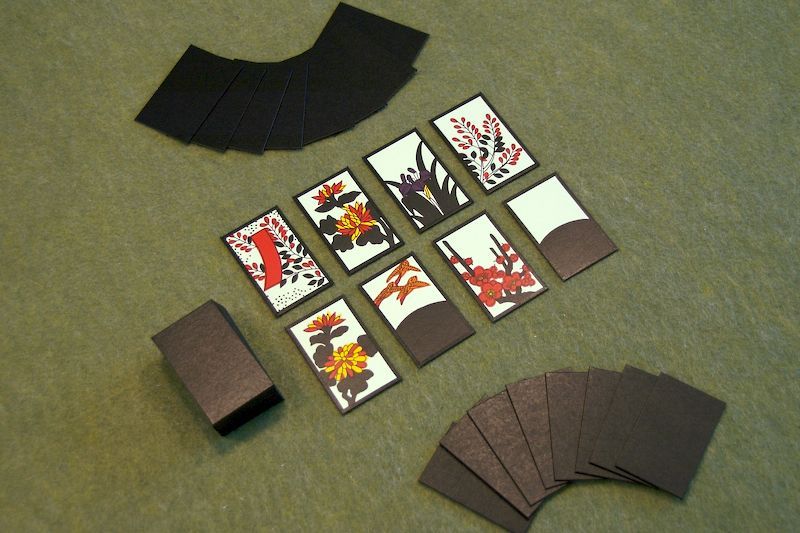Koi-Koi Board Game
Koi-Koi is a traditional Japanese card game that is often played with Hanafuda cards. The game has been popular in Japan for centuries and is known for its simple yet strategic gameplay. Hanafuda cards are unique in that they feature beautiful artwork depicting various seasonal motifs.
Game Components of Koi-Koi Board Game
How To Setup Koi-Koi Board Game
To set up Koi-Koi, an initial dealer (*oya*) is determined, often by drawing a random card where the player with the card from the earliest month or the higher value card becomes the *oya*. The *oya* deals 8 or 10 cards to each player and lays out a few cards face-up on the table. The rest of the cards form the draw pile. If any of the two special *yaku* (Teshi or Kuttsuki) are dealt to the table, it is a misdeal, and the cards are re-shuffled and re-dealt.
Gameplay Mechanics and Game Objective
Player Experience
Koi-Koi offers a dynamic and strategic gameplay experience. Players must balance the risk of continuing to play for higher scores against the risk of losing all points if their opponent forms a *yaku* first. The game involves a mix of luck and strategy, as players need to make tactical decisions about when to call *koi-koi* or *shōbu*.
Pros
Cons
Personal Thoughts on Koi-Koi Board Game
Koi-Koi is ideal for those who enjoy strategic card games with a touch of luck. It is a great choice for players looking to dive into traditional Japanese gaming culture. The game’s simplicity in learning but complexity in mastering makes it appealing to both casual and experienced gamers. However, it may not be the best fit for those seeking a game with straightforward rules or minimal luck involvement.
We are supported by our audience. When you purchase through links on our site, we may earn an affiliate commission, at no extra cost for you. Learn more.

